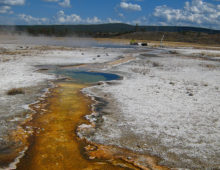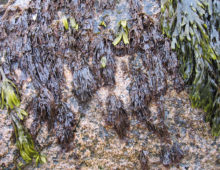Letters of Intent are being solicited for the Department of Energy Joint Genome Institute (DOE JGI) Emerging Technologies Opportunity Program (ETOP) 2018 award. Potential offerors must electronically submit a Letter of Intent through the DOE JGI’s proposal submission system. Letters of Intent need to be received by August 30, 2017. For examples of accepted ETOP proposals,…
Rod Wing, Arizona Genomics Institute
How long have you collaborated with the JGI? It’s probably been about ten years. We’ve been doing these high molecular weight DNA for a few projects and now through the ETOP program, we’re providing high molecular weight substrates for whole genome sequencing and for genotyping of various JGI Flagship Plant Genomes, and in support of…
Mining Eukaryotic Data for Protein Families
Despite decades of work by structural biologists, there are still ~5,200 protein families with unknown structure outside the range of comparative modeling. It has recently been shown that this gap can be largely reduced if Rosetta structure prediction pipeline is augmented with residue-residue contacts inferred from evolutionary information. Such significant boost in the number of…
Facilitating Comparative Sequence Analysis
Comparative sequence analysis, be it between genomes or metagenomes can significantly expand our biological knowledge by letting us ask questions directly of ecosystems and their inhabitants. The team proposes calculating signatures for the approximately 5,200 private microbial genomes and all of private and public metagenomes in the IMG/M database. Having the MinHash signatures will allow…
Developing Analytical Tools for Enzyme Superfamilies
A functionally diverse enzyme superfamily is a collection of enzymes that share a common ancestor and fold, as well as active site architectures and a partial reaction or other chemical capability. Putting enzymes into their superfamily context has proved to be a powerful way to understand their sequence-structure-function relationships. Metagenomic profiling of enzyme superfamilies can…
A Global Database of Microbial sRNAs
Microbial sRNAs are untranslated short transcripts that generally reside within intergenic regions on microbial genomes. Most microbial sRNAs function as regulators, and many are currently known to be involved in environmentally significant processes including amino acid and vitamin biosynthesis, quorum sensing, and photosynthesis. Using publicly available metatranscriptomes and metagenomes, as well as metagenomes and metatranscriptomes…
A Scalable Process for Charting Biogeochemical Cycles
Microbial communities drive matter and energy transformations through distributed networks of metabolite exchange that can be reprogrammed though viral infection. In this light, individual microorganisms function as information processing units implementing a distributed genetic algorithm manifested in biologically driven redox reactions on a planetary scale. A core set of genes that evolved early in the…
Population Studies of Soil Microbial Communities
How microbial communities contrast with respect to taxonomic and functional composition within and between soil ecosystems remains an unresolved question that is central to modeling soil functioning and services. This is especially relevant for remote, northern latitude soils, which are challenging to sample and are also thought to be more vulnerable to climate change compared…
DOE User Facilities Join Forces to Tackle Biology’s Big Data
Inaugural Collaborative Science Call Yields Six Proposals Melding Genomics, Supercomputing Six proposals have been selected to participate in a new partnership between two U.S. Department of Energy (DOE) user facilities through the “Facilities Integrating Collaborations for User Science” (FICUS) initiative. The expertise and capabilities available at the DOE Joint Genome Institute (JGI) and the National…
Insights into A Eukaryotic Alga
The genome of Porphyra umbilicalis reveals the mechanisms by which it thrives in the intertidal zone The Science Through the Community Science Program of the U.S. Department of Energy Joint Genome Institute (DOE JGI), a DOE Office of Science User Facility, a 50-member team led by University of Maine, Carnegie Institution for Science, and East…



